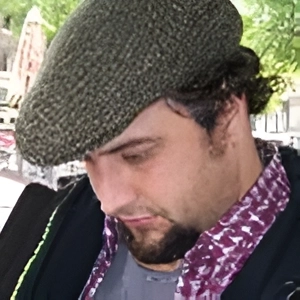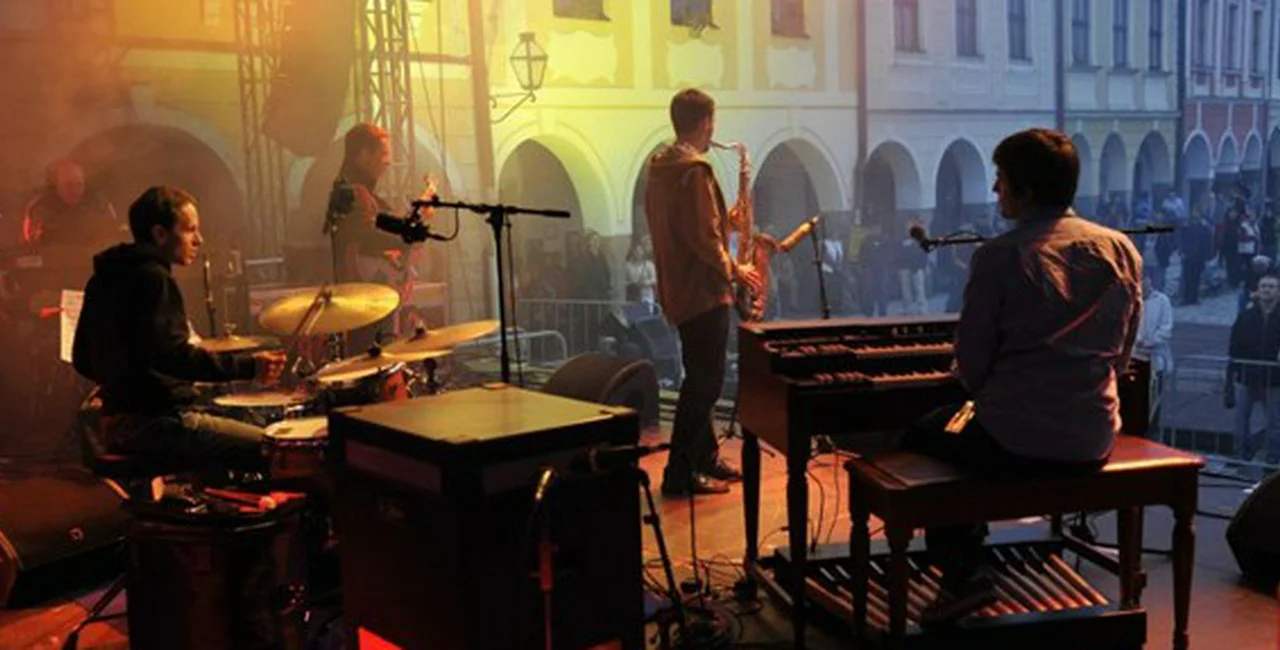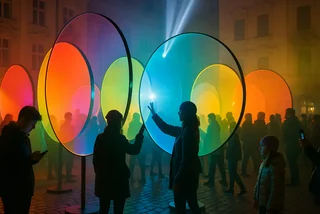Jazz has a definite presence in Prague. The Czech Republic has produced jazz musicians of international renown, the historic center has a number of clubs, and jazz festivals are held throughout the year. But where did it all start?
First Republic Roots
Jazz’s history in this country dates before the beginning of the First Republic, when ragtime and dixieland came to Europe. The first Czechoslovak jazz star of note was R.A. Dvorský who formed the Melody Makers in 1925 and later the Melody Boys in 1929. He played to Prague’s smart set at the Central Hotel, Lucerna, and Barrandov Studios. Karel Vlach’s band, Blue Music, were one of the leading acts of the thirties. Lastly, not list would be complete without the composer Jaroslav Ježek, who worked with the comedy duo Voskovec and Werich.
Swinging under the Occupation
Officially, the Nazis were opposed to jazz because it went against their notions of ‘Aryan music’. They regulated or prohibited such mainstays of jazz as syncopation, trumpet mutes, plucking of double basses and scat.
Yet, jazz managed to exist under the occupation. Some performers, such as Karel Vlach or Inka Zemánková (the Girl Born to Rhythm), were allowed to perform at Cafe Vltava.
Inka Zemánková singing “Slunečnice” (Sunflower)
Others had to play clandestinely. The late Josef Škvorecký recounted how he and his amateur band had to watch out for police in his book Talking Moscow Blues. More remarkably, Bedřich Weiss, a Czech-Jewish jazz musician and songwriter, formed the Weiss Quintet while interned in Terezín, and played in the camp’s cafeteria.
Blues in a Grey Time
In the fifties, the communists regarded jazz as ‘degenerate’, and ‘decadent’. In the sixties and seventies, it was mildly tolerated and festivals were held. In the eighties, the regime started persecuting the Jazz Section of the Musicians’ Union again. Throughout this time, jazz continued to flourish into many styles both new and traditional.
Venues were instrumental in sustaining the form. In 1958, the club Reduta was set up on Národní třída, where it still stands. A couple of blocks away was the theater Viola. The jazz historian, Lubomír Dorůžka, likened Národní třída to 52nd Street in New York, with musicians going from one club to the other. Malostranská Beseda also served as an occasional jazz venue and still does today. Other venues such as Parnas, Vagon and the club at Strahov, only lasted as jazz clubs for a few years.
One of the central figures in the period under communism was the clarinetist and saxophonist Karel Krautgartner. Krautgartner made his first forays into jazz back in the 1930s and was part of Karel Vlach’s Orchestra. Apart from appearances at Reduta with his quintet, Krautgartner led the Taneční orchestr Československého rozhlasu (Dance Orchestra of Czechoslovakia Radio) from 1960 until the Soviet Invasion of 1968 at which point he went to Vienna.
One of the members of Krautgartner’s quintet was Karel Velebný, who was to prove an important contributor to Czech jazz as a composer, saxophonist and later leader of SHQ or the Spejbl and Huvínek Quintet (yes, as in the puppets). The ensemble, described by music historian Vladimír Kouřil, as the most famous jazz combo of Czech jazz, also included two other prominent jazz musicians Jiří Stívin and Emil Viklický both who continue to play today.
Stívin is arguably one of the most distinctive players in Czech jazz. In a style characterized by improvisation, this multi-instrumentalist found ways to explore new territory and draws on classical music as much as the jazz standards. Two of his albums Výlety and Status Quo Vadis, illustrate how far he takes his creativity.
Stívin in concert
Viklický joined SHQ in 1974. In the same year he won first prize as best soloist in the Czech Amateur Jazz Festival. In 1976, he won a prize for playing at a festival for jazz pianists in Lyon and one for composition in Monaco for his piece “Zelený satén” (Green Satin). Viklický has also drawn on a variety of inspirations. His work can be unashamedly upbeat as in “Trochu Funky” (The Funky Way), which appears on Okno, or it can take a more serious turn such as the album Homage to Joan Miró. Viklický and Stívin have even teamed up to record an album together.
Viklický at the jazz club U Staré Paní
These figures are only a tiny representation of the many artists from the country, who would also include Milan Svoboda, Martin Kratochvíl, and Rudolf Dašek. The list also only represents one vein of jazz. During communism, dixieland was still going strong, exemplified by groups such as the Steamboat Stompers or the Jazz Fiddlers. Both groups are active today.
Cross Over Appeal
Czech musicians also made a mark on the international jazz scene, though not always by choice. Krautgartner, as mentioned before, went to Vienna. Jan Hammer, who is known for writing the “Miami Vice Theme”, left the Czech Republic to study at Berklee where he remained to become a respected composer and pianist as well as a member of John McLaughlin’s Mahavishnu Orchestra. Jiří “George” Mráz, who was also once a member of SHQ, left for the USA a little after Hammer. He played bass as part of the Oscar Peterson Trio, performing alongside Stan Getz, John Abercrombie and Chet Baker. Rudy Linka, who was voted one of the best jazz guitarists in 1998 by Down Beat magazine, co-ordinates the Bohemian Jazz Festival.
Rudly Linka at Archa
Striking a New Chord
Many of the jazz musicians from the earlier era have continued to play after the revolution and up to today. You can still catch Stívin and Viklický in concert. Over time they have been joined by a new generation. One of the hardest-working musicians has to be Robert Balzar, who gigs regularly around the city. His album with John Abercrombie, Tales, garnered international attention. (See reviews here and here.)
One of the most original of the newest generation is guitarist and composer David Dorůžka. His style eschews the furious riffs of earlier guitarists, favoring a shimmering, spacious sound. This year he is appearing at the Brno Jazz Fest with the relatively new Czech-Polish ensemble Inner Spaces.
Ondřej Pivec is another popular and exceedingly entertaining performer. He brings flare to his instrument, the Hammond organ. At the moment he is teaching in New York, showing that the Czech Republic continues to appear in the international jazz scene.
The story of jazz in the Czech Republic has definite roots going back through the whole of last century. Of course, those details are only a part of the story. Really, the proof is in the music.
Related articles












 Reading time: 5 minutes
Reading time: 5 minutes 


























